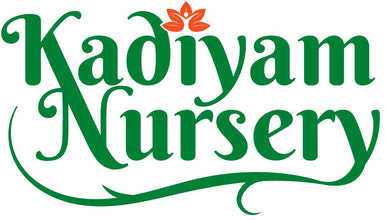-
Plant Description:
-
Nerium oleander 'Flava' is a cultivar of the common oleander plant. It is a bushy, evergreen shrub that is often grown for its bright yellow flowers. The plant can grow up to 15 feet tall and is often used as a hedge or screen plant.
The leaves of the 'Flava' cultivar are dark green and leathery, and the plant produces clusters of bright yellow, trumpet-shaped flowers that bloom throughout the summer. The flowers are highly fragrant and are a favorite of bees and other pollinators.
Oleanders are generally hardy and easy to grow, making them a popular choice for gardens and landscapes. They are tolerant of a wide range of soil types and can tolerate salt spray, making them a good choice for coastal locations. They are also drought-tolerant once established, but will benefit from regular watering during periods of drought.
It's important to know that all parts of the Oleander plant are poisonous if ingested, and can cause severe symptoms such as nausea, vomiting, and heart problems. Contact with the sap of the plant can also cause skin irritation in some people, so it's a good idea to handle the plant with gloves and to wash your hands thoroughly after handling it.
Oleanders do best in full sun and well-drained soil. They can be propagated from stem cuttings or by seed, although stem cuttings are more reliable and faster-growing.
-
Growing tips:
-
The care requirements for Nerium oleander 'Flava' are similar to those for other oleander cultivars. Here are some tips for growing and caring for this plant:
-
Sunlight: Oleanders prefer full sun and will produce the most flowers in a sunny location. They will tolerate some shade, but will have fewer flowers and a less compact habit.
-
Watering: Oleanders are drought-tolerant once established, but they will benefit from regular watering during periods of drought. Water the plant thoroughly and deeply, allowing the soil to dry out slightly between waterings.
-
Soil: Oleanders are adaptable to a wide range of soil types but prefer well-drained soils. They can tolerate both alkaline and acidic soil but avoid overly wet soils.
-
Fertilizing: Oleanders can benefit from regular fertilization to promote healthy growth and a profusion of flowers. Use a balanced, slow-release fertilizer in the spring, and supplement with occasional applications of a liquid fertilizer during the growing season.
-
Pruning: Prune oleanders as needed to control size and shape. They can be pruned back hard in late winter or early spring, if needed. Remove any dead or diseased wood, and shape the plant as desired.
-
Pest and Disease: Oleanders are generally pest and disease-free, but they can be susceptible to insect pests such as scale or mealybugs and fungal diseases such as powdery mildew. Keep an eye out for signs of problems and take action as necessary.
-
Overwintering: Oleanders are hardy to frost and generally don't need any special care in the winter. However, if you live in an area where temperatures regularly drop below freezing, protect the plant by moving container-grown oleanders indoors or covering them with frost blankets during the coldest months of the year.
With proper care, Nerium oleander 'Flava' will grow into a beautiful, long-lived shrub that will bring a touch of color and fragrance to your garden for many years to come.
-
Benefits:
-
Nerium oleander 'Flava' is not only an attractive plant but also has several potential benefits:
-
Ornamental: The bright yellow flowers of 'Flava' make it a popular choice for gardens and landscapes. It can be grown as a hedge, screen, or accent plant, and its evergreen leaves provide year-round interest.
-
Pollinator-friendly: The fragrant flowers of 'Flava' are a favorite of bees and other pollinators, making it a great choice for a wildlife-friendly garden.
-
Drought-tolerant: Once established, oleanders can tolerate extended periods of drought, making them a good choice for gardens in dry or hot climates.
-
Salt-tolerant: Oleanders can tolerate salt spray, making them a good choice for coastal locations or areas near roads where salt is used in the winter.
-
Low-maintenance: Oleanders are generally hardy and easy to grow, making them a good choice for gardeners who want a colorful and attractive plant without a lot of fuss.
-
Medicinal potential: Oleander has been used for medicinal purposes in traditional medicine for centuries, It is believed to have anti-cancer, anti-inflammatory, and anti-viral properties. But this plant is extremely toxic and not suitable for consumption.
It's important to keep in mind that all parts of the oleander plant are poisonous, so care should be taken to keep it away from children and pets. Also, it is not recommended to consume or use it in any form of medicine without consulting a professional


